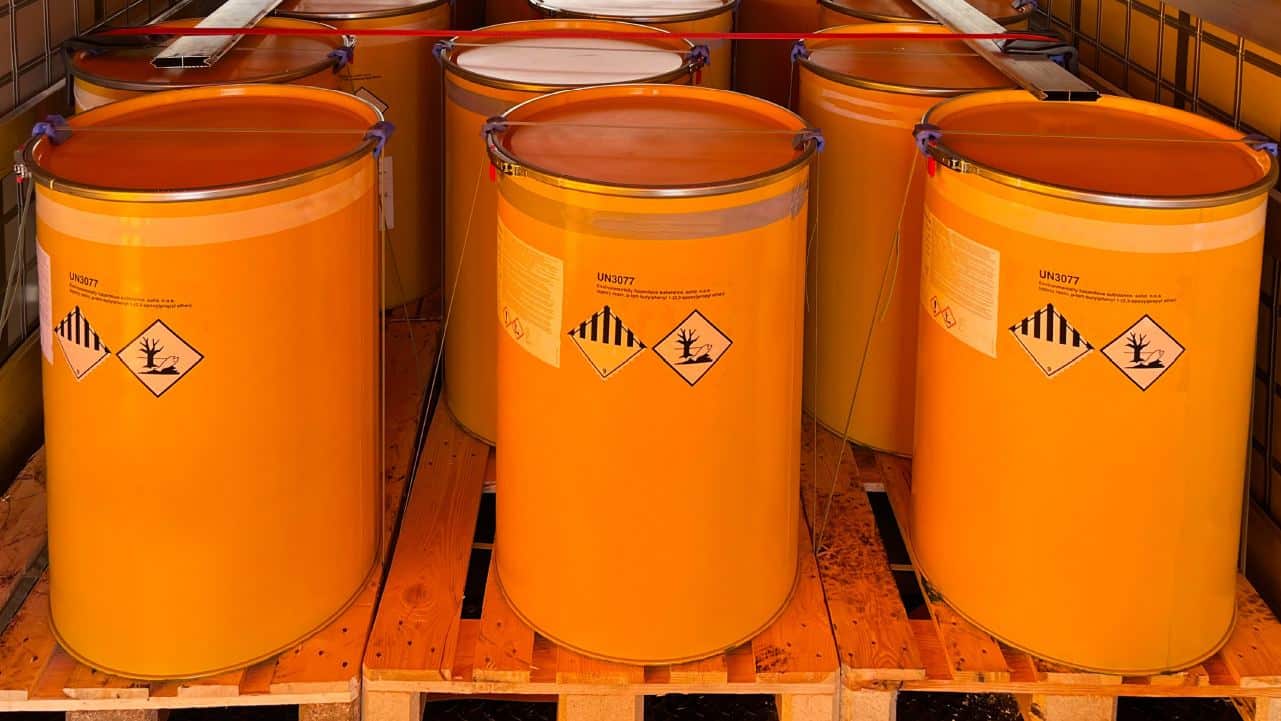IMDG Code: Ηazardous and harmful cargoes onilne course is designed to provide an extensive understanding of the IMDG Code, including the handling, labeling, packaging, and classification of hazardous and harmful cargoes.
What is the purpose of IMDG code?
The International Maritime Dangerous Goods (IMDG) Code serves to safeguard the safety of crew members and prevent marine pollution in sea transport by providing a comprehensive set of regulations for the shipping of dangerous goods. Its purpose is to standardize procedures, packagings, and stowage methods by classifying dangerous goods and substances into different categories based on their properties.
The code is universally recognized and accepted, thus facilitating international trade and ensuring that hazardous materials are transported safely over water. By adhering to the IMDG Code, shipping companies can effectively manage and reduce risks associated with transporting hazardous materials.
Key Learning Objectives
- Gain comprehensive knowledge about the risks associated with the maritime transportation of Dangerous Goods in their packaged form.
- Enumerate the classification of Dangerous Goods as per the International Maritime Dangerous Goods (IMDG) Code.
- Define and distinguish between various characteristics of Packing Groups and understand how UN Number Allocation works.
- Provide a detailed explanation of correct packing procedures, stowage, and segregation strategies for incompatible substances found within transported dangerous goods.
- Specify general protocols to follow during incidents involving dangerous goods, including necessary fire precautions and safety measures.
- Identify all 9 classes of transported dangerous goods according to their definitions in the IMDG Code.
- Provide an insightful description of each class’s provisions under the dangerous goods classification system following IMDG standards.
Course Contents
- The purpose and general structure of the IMDG Code involve providing comprehensive guidelines and regulations for the safe transportation of dangerous goods by sea, ensuring that every step of the process is meticulously planned and executed to minimize risks and ensure the well-being of all involved parties.
- Classes and Packing Groups play a pivotal role in categorizing different hazardous materials based on their properties, enabling accurate identification and allowing for appropriate handling, storage, and transportation methods to be implemented accordingly. These classifications serve as a crucial foundation for determining the level of hazard associated with each material, ensuring that necessary precautions are taken.
- The categorization of materials based on their hazard levels is a vital aspect of the IMDG Code that enables effective risk management during the transportation process. By classifying materials according to their inherent dangers, it becomes possible to establish protocols and procedures that enhance safety measures and mitigate potential accidents or incidents that could endanger human life or harm the environment.
- Stowage and segregation of goods are critical considerations when it comes to ensuring the safe transport of dangerous goods. The IMDG Code provides guidance on proper stowage techniques, emphasizing the importance of securing goods in a manner that minimizes movement or damage during transit. Additionally, segregation norms help prevent potentially dangerous reactions between incompatible substances by maintaining proper separation between them.
- The principles governing the stowing of goods in a safe manner prioritize meticulous planning, attention to detail, and adherence to established guidelines throughout the entire process. This includes factors such as selecting appropriate packaging materials, securing items adequately within vessels or containers, considering weight distribution for stability purposes, and following best practices for efficient stacking or arranging goods.
- Segregation norms are essential rules aimed at preventing any adverse interactions between different types of goods being transported together. By implementing strict segregation requirements outlined in the IMDG Code, risks associated with chemical reactions or explosions resulting from incompatible combinations can be significantly reduced or eliminated altogether.
- The IMDG Code encompasses general provisions that guide individuals involved in the transportation of dangerous goods in case of an incident. These provisions outline specific steps and procedures to be followed, ensuring a prompt and effective response to minimize risks, protect lives, and mitigate any potential impact on the environment.
- Emergency response procedures outlined in the IMDG Code serve as a comprehensive framework for handling situations requiring immediate attention or action due to incidents involving dangerous goods. These procedures include protocols for reporting emergencies, evacuation plans, communication strategies, and instructions for utilizing appropriate personal protective equipment while dealing with hazardous materials.
- Fire precaution measures detailed in the IMDG Code are designed to prevent fire-related incidents during sea transportation. By establishing guidelines for proper packaging, labeling requirements, stowage arrangements, and having adequate firefighting equipment readily available onboard vessels, risks associated with fires are minimized while ensuring swift responses to any fire-related emergencies that may arise.
- The IMDG Code classifies dangerous goods into nine different classes based on their specific properties and associated hazards. Each class is assigned its unique label that accurately reflects its nature, ensuring clear identification and facilitating proper handling or transportation measures needed to ensure overall safety.
- Labelling requirements for different classes play a pivotal role in promoting safe practices when it comes to handling dangerous goods. The precise labeling of materials enables easy identification by providing clear information about their inherent hazards, allowing individuals involved in transportation processes to take necessary precautions accordingly while adhering to relevant regulations specified within the IMDG Code
Who Should Attend?
All crew (on board), and ashore personnel
Course Delivery Method
The course leverages an interactive digital platform that offers learners flexibility to study at their own pace through engaging multimedia content such as videos, animations, quizzes alongside simulations resembling real-life situations.
Duration: 2h
Approval: ABS
A shorter version of this course is also available under the title: International Maritime Dangerous Goods (IMDG) Code Awareness Training






